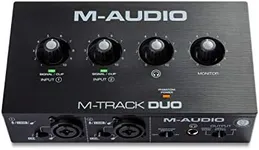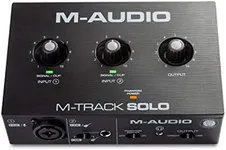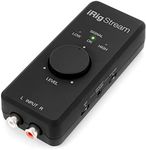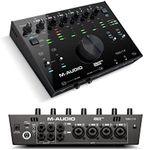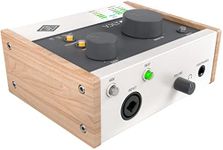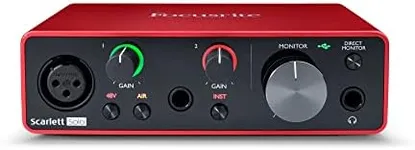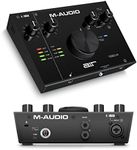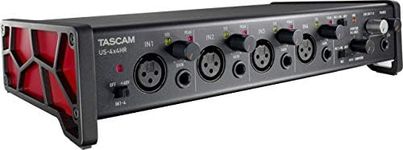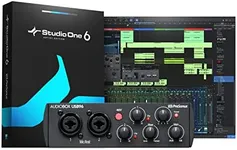Buying Guide for the Best Audio Interface For Mac
Choosing the right audio interface for your Mac is all about matching your recording or production needs with the right features. An audio interface acts as the bridge between your instruments, microphones, and your computer, allowing you to record, play back, and monitor audio with better quality and flexibility than your Mac’s built-in sound card. To find the best fit, think about what you want to record, how many sources you’ll use at once, and what kind of sound quality you expect. Understanding the key specifications will help you make a confident choice.Connectivity (USB, Thunderbolt, etc.)Connectivity refers to how the audio interface connects to your Mac. The most common types are USB and Thunderbolt. USB interfaces are widely compatible and work with almost all Macs, making them a safe choice for most users. Thunderbolt offers faster data transfer and lower latency, which can be important for professional work or when using many channels at once. If you have a newer Mac with Thunderbolt ports and need high performance, Thunderbolt might be best. For general home recording or podcasting, USB is usually sufficient. Always check your Mac’s available ports before deciding.
Number of Inputs and OutputsInputs and outputs determine how many microphones, instruments, or speakers you can connect at the same time. If you only record vocals or a single instrument, a simple interface with one or two inputs will do. If you plan to record a band or multiple sources at once, look for more inputs. Outputs are important if you want to connect multiple sets of speakers or send audio to other devices. Think about your current needs and whether you might want to expand in the future.
Preamps and Phantom PowerPreamps boost the signal from microphones to a usable level, and phantom power is needed for certain types of microphones called condensers. Good quality preamps help your recordings sound clear and detailed. If you use condenser microphones, make sure the interface provides phantom power (often labeled as +48V). For basic voice or instrument recording, most modern interfaces have decent preamps, but if you want the best sound for professional vocals or instruments, look for interfaces known for high-quality preamps.
Sample Rate and Bit DepthSample rate and bit depth affect the quality of your recordings. Higher values mean more detailed and accurate sound, but also larger file sizes. Common sample rates are 44.1kHz and 48kHz, which are enough for most music and podcasting. Bit depth is usually 24-bit for modern interfaces, which gives good dynamic range. Unless you’re working in a professional studio or need to match specific technical requirements, standard values (44.1/48kHz, 24-bit) are more than enough.
Direct MonitoringDirect monitoring lets you hear yourself in real time without delay while recording. This is important because it helps you perform better and avoid timing issues. Some interfaces have a knob or switch for direct monitoring, while others use software. If you plan to record vocals or instruments and want to hear yourself clearly as you play, make sure the interface offers direct monitoring.
Driver and Software CompatibilityDriver and software compatibility means how well the interface works with your Mac and your recording software. Most modern interfaces are plug-and-play with macOS, but some require drivers or special software. Check that the interface supports your version of macOS and works with your preferred recording programs (like GarageBand, Logic Pro, or others). If you want a smooth setup, look for interfaces that are known for good Mac compatibility.
Portability and Build QualityPortability and build quality refer to how easy the interface is to carry around and how sturdy it is. If you plan to travel or record in different locations, a compact and durable interface is helpful. For home studios, size may not matter as much, but a solid build can still mean longer life and better reliability. Think about where and how you’ll use the interface to decide what’s best for you.
